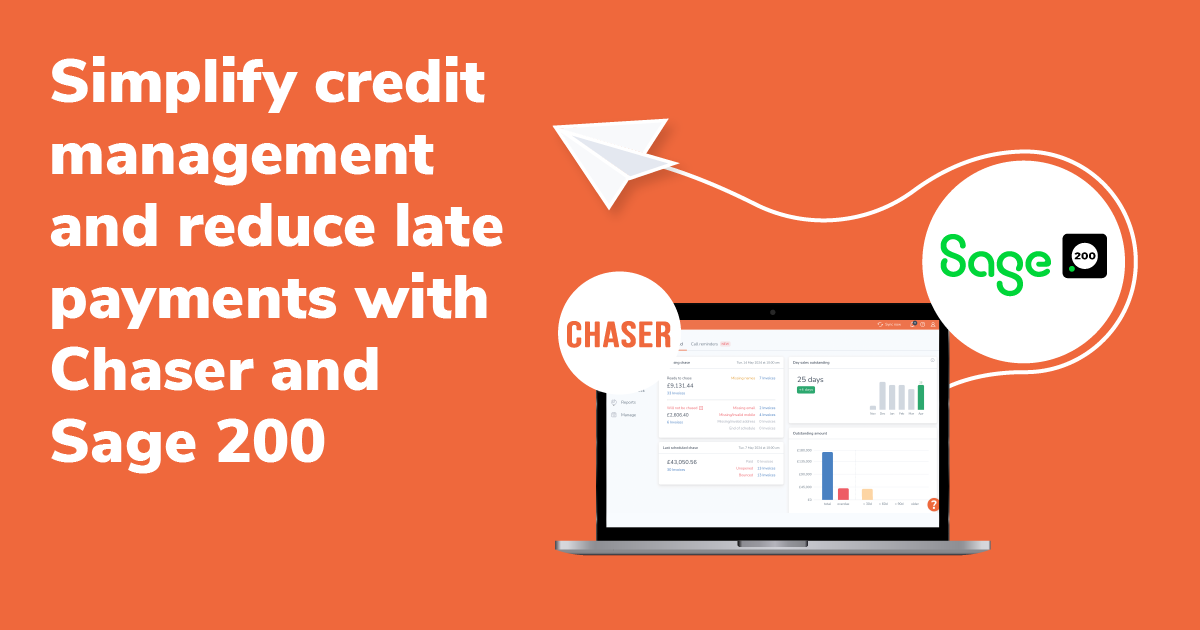As accountants, you are likely experts in credit control and the management of accounts receivable. After all, this is often one of the services that you offer to your customers.
However, even as experts in this field, you may still struggle to find the time and resources to implement and conduct your own credit control.
In this blog post, we will give you 5 tips on how you can optimise your own credit control process and get your debtors to pay sooner!
Optimising your credit control
When it comes to credit control, there are a few key things that you can do in order to optimise the process and make sure your firm get paid faster:
Creating a credit control policy
Your credit control policy is the foundation of your credit control process, so it is important to make sure that it is clear and concise. This document should outline your expectations for customers when it comes to payment, as well as the consequences for not meeting these expectations.
The benefit of having a concise credit control policy is that it makes it clear to your customers what is expected of them, and also sets out the consequences if they do not meet these expectations. This can help to discourage late payments, as customers will be aware of the potential repercussions.
If you don't have a credit control policy, now is the time to create one! We've even created a template to get you started. If you already have a policy, take a look at it and make sure that it is fit for purpose and optimise it if not.
Adopting key performance indicators
Key performance indicators, or KPIs, are a great way to measure how well your credit control is performing.
Many businesses use KPIs for departments like sales and marketing, but credit control is just as important.
KPIs can help you to track how much money is owed to you, how quickly invoices are being paid and what percentage of invoices are paid on time.
This information can be used to improve your credit control process and make sure that you are getting paid as quickly as possible.
This will help you to identify any areas that may need improvement, and focus on these in order to achieve better results.
Some of the KPIs you may want to consider include:
- Percentage of invoices paid within agreed terms
- Average debtor days
- Percentage of invoices paid late
- Number of days taken to resolve disputes
- Value of write-offs as a percentage of total sales
- Staff turnover in the credit control department
- Days sales outstanding
Some KPIs will need to be worked out, for example, the formula for calculating days sales outstanding is:
DSO= accounts receivable total / credit sales x number of days
If you want to learn which nine other KPIs you should be tracking, you can find our breakdown here.
By using KPIs, you can track the success of your credit control measures and make the necessary changes to improve them.
Send a polite payment reminder before the invoice is due
While you might be already doing this, it's worth reiterating that a polite payment reminder before the invoice is due can work wonders in getting customers to pay quicker.
A polite payment reminder is not a demand for payment, it's sent in advance of the invoice due date to let your customer know that their payment is upcoming.
Sending this kind of reminder through email and SMS can help accountants reduce debtor days even further.
The benefit of sending this kind of advance message is that it can help to build a positive relationship with your customers and, as we all know, happy customers are more likely to pay on time.
It also allows you to address any disagreements or issues the customer might have with the invoice before it becomes a problem. Including a copy of the upcoming invoice with your reminder is also a good way to help your customer budget for the payment.
Use a combination of SMS and email
Email is the tried and tested method of communication but, in today’s fast-paced world, sometimes an email can get lost in an inbox.
That’s why we recommend using a combination of SMS and email to remind your customers about upcoming payments.
Sending an SMS is a great way to cut through the noise and ensure that your message is seen and read by your customer. The read rate for SMS is 98% compared to the email read rate of just 20-30%.
Including a payment link in your reminder email is also a great way to make it easy for your customer to pay. All they need to do is click on the link and they will be taken straight to our online payment portal where they can pay their invoice
The benefits of using SMS don’t stop there. SMS also allows you to automate your reminders with credit control platforms like Chaser, meaning that you can set up a system and forget about it, safe in the knowledge that your customers will still be reminded about their upcoming payments.
Your reminder message should always include a call to action, whether that’s clicking on a link to pay the invoice or calling you to discuss payment options.
By including a call to action, you make it easy for your customers to take the next step and pay their invoices.
SMS is the perfect way to remind customers about their upcoming payments, and it’s a great way to improve your credit control. Not only will you get paid faster, but you can also reduce your debtor days and keep on top of your cash flow.
Implement credit control automation software
Finding the time to chase payments can be difficult.
That’s why credit control automation software is an essential tool to help accountants optimise credit control. There are a number of different platforms available, but Chaser offers a great solution that can help you get paid faster.
Chaser is a cloud-based platform that automates the entire credit control process, from issuing invoices to chasing payments. Payment messages can be sent automatically and you can keep track of all your correspondence in one place.
What’s more, Chaser integrates software like Xero and Quickbooks so you can keep your accounts up to date without having to switch between different platforms so you can manage your entire credit control process from within your accounting software.
Additionally, Chaser offers other functions such as Payment Portals so your customers can pay you quickly and easily online, and access to our professional debt collection team if things do go wrong and you need to chase a payment that is overdue.
If you want to reduce your debtor days, then Chaser is definitely the solution for you. To find out more about how Chaser can help optimise your credit control process, visit our website and start your free trial today!
If you’re looking for a way to optimise your credit control and reduce debtor days, Chaser is the perfect solution. If you’re looking to optimise your credit control, we recommend giving Chaser a try.
Staying on top of your credit control
Even as an accountant, you can struggle to keep on top of your credit control. After all, it’s not always easy to chase payments that are overdue and effective credit control takes time and effort.
That’s why we’ve put together these five ways that accountants can optimise their credit control process and get paid faster.
One of the best ways to optimise your credit control is to use technology to automate repetitive tasks. By automating, you can free up time to focus on more important things, like chasing payments.
This is where Chaser comes in.
Chaser is a tool that helps accountants optimise their credit control and reduce debtor days. With Chaser, you can easily send automated payment reminders and escalation emails to customers who are overdue on their payments.
This will help to get your customers to pay quicker, reducing the amount of time that money is outstanding and improving your cash flow.
Get a free trial of Chaser today and see how it can help optimise your credit control!




